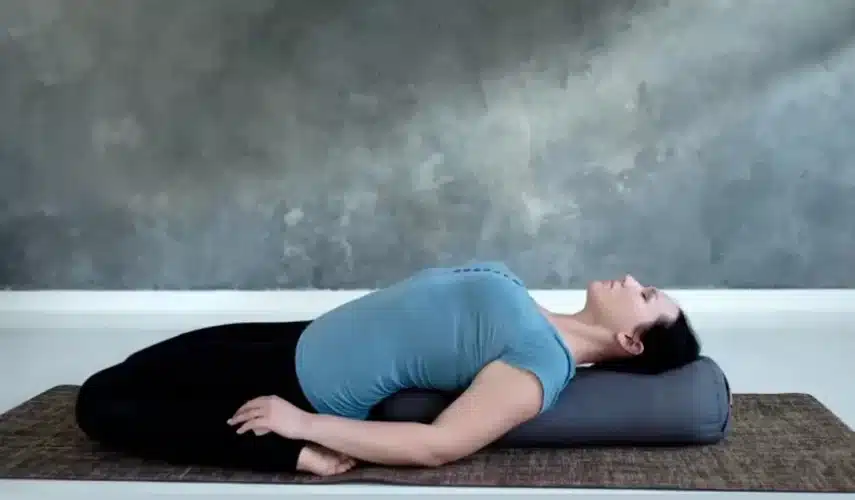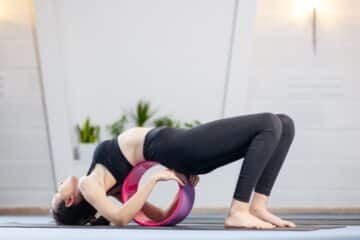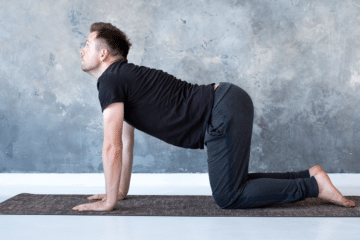In the bustling world we inhabit, finding moments of tranquility and stillness becomes paramount to maintaining balance and well-being.
Amidst the myriad of yoga postures designed to nurture the body, mind, and spirit, Child’s Pose emerges as a sanctuary of comfort and surrender.
Rooted in the ancient practice of yoga, Balasana, as it’s known in Sanskrit, offers practitioners a gentle invitation to retreat inward, release tension, and find solace in the present moment. Let’s delve into the essence of Child’s Pose and discover its myriad benefits:
Benefits of Child’s Pose (Balasana):
- Relieves Tension: Child’s Pose gently stretches the spine, hips, and thighs, offering relief from tension accumulated from daily activities, exercise, or prolonged sitting. As the body surrenders into the pose, tight muscles begin to soften, promoting relaxation and rejuvenation.
- Calms the Mind: The forward folding nature of Child’s Pose encourages introspection and quietens the mind. As you bow your head towards the earth and soften your gaze, you create a sense of grounding and tranquility, allowing thoughts to come and go without attachment.
- Deepens Breathing: This pose invites deep, diaphragmatic breathing, which can help calm the nervous system and reduce stress and anxiety. As you inhale, feel the expansion of the ribcage, and as you exhale, allow the body to soften further into the pose, releasing any tension held within.
- Promotes Digestion: By gently compressing the abdomen, Child’s Pose stimulates the digestive organs, aiding in digestion and promoting regularity. This can be especially beneficial after a meal or during times of digestive discomfort.
- Restores Energy: Despite its gentle nature, Child’s Pose is a restorative posture that provides a moment of respite in a busy day. Taking a few minutes to rest in Balasana can help restore energy levels and cultivate a sense of inner calm and balance.
How to Practice Child’s Pose:
- Starting Position: Begin by kneeling on the floor with your big toes touching and your knees spread apart wide enough to accommodate your torso comfortably.
- Surrender Forward: Slowly lower your torso between your thighs as you exhale, allowing your forehead to rest gently on the mat. Your arms can be extended in front of you with palms facing down, or you can choose to relax them by your sides with palms facing up.
- Lengthen the Spine: Extend your arms forward and reach through your fingertips to lengthen your spine. As you relax into the pose, feel a gentle stretch along the spine and the entire length of the back.
- Breathe Deeply: Close your eyes if it feels comfortable, and focus on deepening your breath. Inhale deeply through the nose, feeling the belly expand, and exhale fully, allowing the body to soften further into the pose with each breath.
- Stay Present: Remain in Child’s Pose for as long as feels comfortable, allowing yourself to fully surrender to the present moment. Release any tension held in the body and embrace the sense of peace and stillness that arises.
- Exit the Pose: To release from Child’s Pose, gently walk your hands back towards your body, lifting your torso upright as you inhale. You can then transition into a seated position or move into the next pose in your yoga sequence.
Modifications and Variations:
- Knee Support: If you experience discomfort in your knees, place a folded blanket or yoga mat under them for extra cushioning.
- Arms Variation: Experiment with different arm variations to find what feels best for your body. You can keep your arms extended in front of you, or bring them alongside your body with palms facing up for a different sensation.
Precautions:
- Avoid Child’s Pose if you have any recent or chronic knee injuries. Instead, choose a more suitable posture or consult with a yoga instructor for modified variations.
- If you have difficulty breathing while in Child’s Pose, consider placing a bolster or folded blanket under your chest for support.
Conclusion
Child’s Pose, with its nurturing embrace and restorative qualities, serves as a sanctuary for the body, mind, and spirit.
By integrating Balasana into your yoga practice, you can tap into its profound benefits of relaxation, introspection, and rejuvenation.
Whether you’re seeking a moment of quietude amidst a hectic day or a gentle release for tired muscles, Child’s Pose offers a safe and comforting space to surrender, breathe, and reconnect with your innermost self.
Embrace the simplicity and serenity of Child’s Pose as you journey towards holistic well-being and inner peace.



